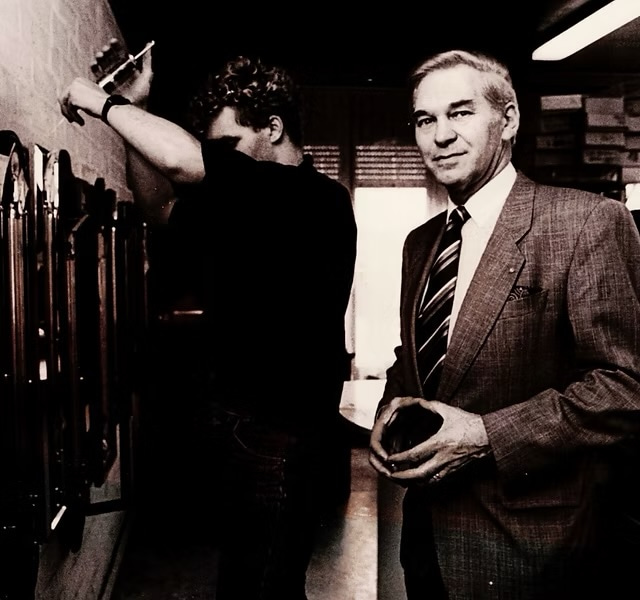
The company Denis Dingens was founded in 1965 in Belgium by Denis Dingens and his wife Gussy. With a background as a watchmaker and instrument technician in the Australian aviation industry, Denis turned his attention to designing and manufacturing his own barometers. Thanks to the support of the popular Belgian meteorologist Armand Pien—whose name the company initially used as a brand—Dingens quickly gained recognition in Belgium and neighboring countries.
By the late 1980s, the business was handed over to the next generation. In the 1990s, the company established in-house workshops for glass and wood processing, enabling the production of unique barometers under the Dingens brand. These instruments were exported worldwide—from the United States and Canada to Japan and Russia—where the Dingens name became associated with quality craftsmanship and precision.
A hallmark of the company was its revival of historical designs, most notably the contrabarometer invented by Christiaan Huygens in the 17th century. Dingens reintroduced this long-forgotten concept, creating high-precision instruments that honored Europe’s scientific and artistic heritage.
In 2007, without proper legal procedure or prior warning, the European Commission banned the production of mercury barometers—including Huygens’ contrabarometer. The ban was based on a flawed report claiming that barometers contained up to 12 kg of mercury (whereas they actually contained only 8–10 grams). This decision severely impacted small-scale artisan producers, who were powerless against such political pressure.
In response, Paul Dingens began developing the mercury-free Innovacelli barometer in 2008. The aim was to match the precision and durability of traditional mercury barometers while offering a more user-friendly and export-ready alternative. Tested by the University of Hasselt, Innovacelli proved to be accurate, eco-friendly, and easy to use. Its design flexibility allowed it to suit both modern and classic interiors, and it soon found its place in laboratories and even oncology departments.
Despite scaling down due to regulatory pressure, the company continued to serve clients worldwide—including in the US, Canada, India, and Pakistan—and opened a permanent sales location in Yorkshire (UK) in 2013. Dingens also worked as an OEM supplier for well-known European clock manufacturers.
Since the mid-2010s, the company has returned to its roots: small-batch, artisanal manufacturing and restoration. Every barometer is hand-assembled and tested in-house, with a strong emphasis on design and quality. Restoration of antique instruments and clocks, as well as the buying and selling of barometers, has become a core activity.
In 2025, Dingens celebrates its 60th anniversary—an achievement few companies reach. While many producers have succumbed to the trend of disposable goods and offshore manufacturing, Dingens remains committed to traditional European craftsmanship and scientific excellence.
A notable chapter in the company’s legacy is its support of polar expeditions. Among others, Dingens provided instruments for Belgian explorer Dixie Dansercoer, who in 1997–1998 crossed Antarctica with Alain Hubert, covering nearly 3,932 km in 99 days using a power kite—a world record at the time.
This historical overview is based on the official website of the company, barometers.com.